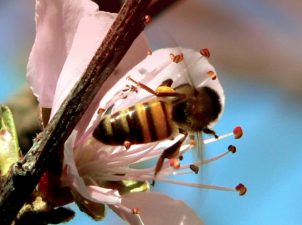Last week, Israeli company Netafim, a pioneer in drip irrigation technology, signed a $22 million deal to supply irrigation for a large-scale sugar cane project in Peru.
In conjunction with Maple Energy, a Peruvian company that produces energy for industrial clients, the project will cultivate 20,000 acres of sugar cane for the creation of ethanol, an alternative energy fuel.
This project concerns me for a few reasons.
Drip irrigation, the water-saving technology that Netafim and other Israeli companies pioneered, increases water efficiency, but not necessarily sustainability. Indeed, a study that came out in November found that, contrary to its reputation, drip irrigation actually increases the total amount of water consumed. In an era when countries all over the world are facing worsening drought conditions, I’m not sure it’s prudent to encourage such large-scale, thirsty agricultural projects, especially in developing nations (like Peru) that are more economically and environmentally vulnerable.
Furthermore, I’m not sure the production of sugar cane for ethanol fuel is a wise choice. Although the energy balance for sugar cane ethanol is higher than it’s oft-criticised counterpart, corn ethanol, it is still rather low. This means that, while ethanol is a renewable fuel whose greenhouse gas emissions are much lower than those of petroleum, the process of producing and processing the sugar cane into ethanol is quite energy intensive, and might even produce more greenhouse gases than are saved by burning the ethanol in the first place.
Last but not least, the mono-cultivation of such a large area is dangerous, and could lead to problems like soil erosion, nutrient runoff, and widescale crop infestation and failure. Also, as the market price for sugar cane increases, it is likely that other lands – even those that grow food for people – will be converted to similar intensive sugar cane production, which could have large economic, social, and environmental ramifications.
It’s good news that Netafim, who recently had to lay off 200 workers, was able to sign such a valuable deal in amidst a global economic crisis. But I wish economic prosperity didn’t come at the cost of the Peruvian (or the global!) environment.
:: Ynetnews
Image Credit: sheilaellen
More Prophecies related to biofuels:
Squeezing Energy From a Plant’s Metabolism at Hebrew University
Elite Coffee Factory Uses Leftover Beans to Make Great Smelling Energy
Olivebar Rolls Out “Green” Olive Logs To Power Your Wood Stove With Olive Waste




this is not trule….. drip consume more water ?. where did you find this ……any scientific evidence,,,,
Superb. Rather than trumpet and repeat public relations and research tidbits, your extra effort to examine and understand technology is superb.
Another example: Was the USA premature to boost corn-ethanol without considering the impact of 2100 gallons of water required for each gallon of ethanol?
Not expecting it, I was surprised to learn that drip systems can increase overall water losses due to secondary evaporation, can increase solids contamination, and decrease total water resources in a region.
We truly need to review broad life-cycle analysis as well as immediate benefits before major investments.
Netafim is a great product! Hats off to the inventor. I use it in my irrigation system designs for residential and commercial applications.